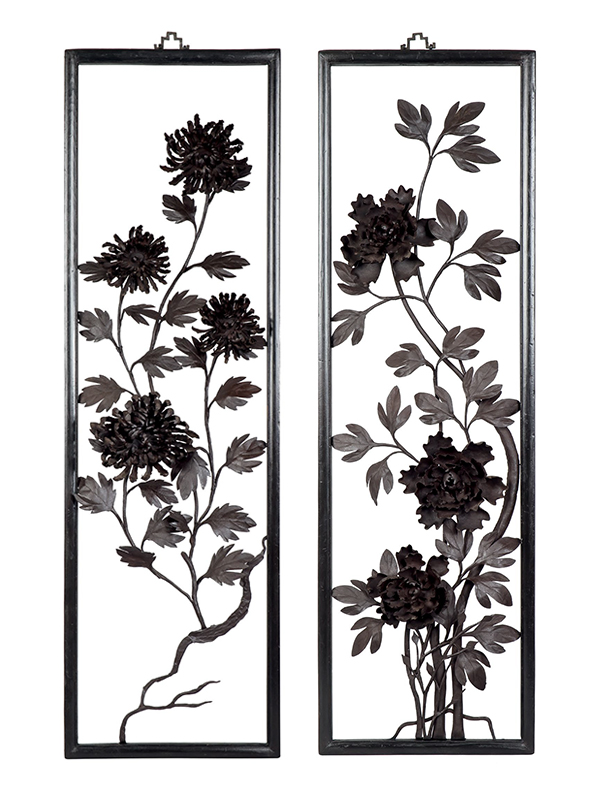Two iron “paintings”, tiehua
China, 18th – 19th century
Two iron paintings of rectangular format, one depicting branches of abundant, flowering chrysanthemum, the other decorated with branches of peony. Each painting is contained within a hardwood frame. The wrought iron elements are made individually and jointed together with bolts.
The birth of tiehua was attributed to a Wuhu blacksmith, Tang Peng (also known as Tang Tien-chi, 1644 – 1722), who was inspired by Chinese ink paintings depicting landscapes by the painter Xiao Yun-Cong (1596 – 1673).1 The discovery of iron belt hooks in graves dated to the 4th and 3rd centuries BC provides some insight into when the material was first used in China, although it is not until the 17th century that the names of actual artists working in the medium are recorded.2 According to Terese Bartholomew, the chrysanthemum (juhua) symbolizes autumn and longevity3 whilst the peony (fuguihua) is the “flower of wealth and honour”.4 A set of four 18th century iron paintings representing the seasons is in the collection of the British Museum, one of which is illustrated by Jenyns.5
- Jenyns, R.S. and Watson, W. Chinese Art, vol. II, Phaidon, Oxford, 1980, p.104
- Jenyns, R.S. and Watson, W. op. cit. p.70
- Tse Bartholomew, T. Hidden Meanings in Chinese Art, Asian Art Museum, San Francisco, 2006,7.11 p. 175
- Tse Bartholomew, op. cit. 6.31, p. 155
- Jenyns, R.S. and Watson, W. op. cit. p.104


